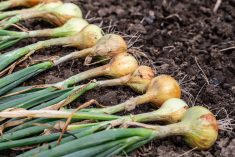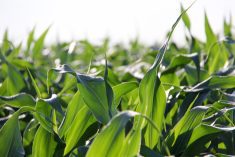Farmers are often referred to as “producers” – wheat producers, canola producers, cattle producers, hog producers, etc.
While these references are logically rooted in the commodities grown on individual farms, they don’t provide a bridge to consumers filling their grocery carts. If we change the way we look at what farmers do, away from these traditional labels, agriculture can more effectively engage with consumers who are increasingly asking “where does my food come from?”
Farmers are not commodity producers. They are food producers. Viewing farmers as food producers changes perceptions in two ways.
Read Also

Your best (and easiest) holiday dainty tray
Make-ahead recipes, store-bought goodies and co-operation with friends and family: Here’s how to throw together a stunning, low-stress tray.
First, the needs and drivers of consumers shift from mattering only to the companies at the end the value chain, far removed from farmers, to being directly considered when farming practice decisions are made. Second, the silos built up around individual commodities start to break down.
[RELATED] Opinion: Drought, war, inflation and consumer disconnect
When farmers view themselves as commodity producers, there can be a tendency to think that the responsibility for their products ends upon delivery to the processing facility or the elevator. That is not the case. In fact, the demands of consumers flow back through the entire value chain to the farmgate.
What happens on the farm matters to consumers, and farm practices impact Canadian agriculture’s ability to access key markets and influence the prices farmers receive for the food they produce.
This is why audited and science-based assurance programs, like the updated Canadian Pork Excellence (CPE) programs, are so important. This is, in part, how Canadian agriculture meets the expectations the public has for food producers on safety, environmental impact and animal care.
For example, CPE industry-led programs demonstrate to consumers in Canada and around the world that Canadian pork is raised using the highest animal care standards and that the food we produce will consistently be the high quality they have come to expect. Other Canadian food producers like those in the dairy, beef and the poultry industries have similar state-of-the-art assurance programs.
Some have wondered if the benefits of these programs reach the farmgate. They do.
For example, we could not expect to maintain our dominance of supply in the domestic market without our ability to provide these assurances to Canadian consumers. This is also a key reason why Canada is a favoured food supplier for high-valued markets like Japan.
Additionally, if we did not have these farmer-developed standards in place, the consuming public would certainly demand that governments impose requirements through regulations; regulations that would likely be developed without agriculture’s direct input.
In short, these standards are the table stakes necessary to maintain our position as a preferred food supplier around the world and to maintain our social license to operate farms here at home.
Helping to recognize and answer consumers’ questions about how their food is produced is one reason to shift how farmers are viewed, from commodity producers to food producers. Another reason is to help agriculture step out of commodity silos when working to address the needs and wants of the public.
Consumers do not buy commodities at the grocery store. They buy a basket of food that will be used to make a meal. The whole plate matters, not just the individual ingredients.
[RELATED] Competition Bureau to probe soaring food prices
When farmers are viewed as food producers, we do not see many differences between the farmers that produced the cheese for the meal or the bread that will accompany that delicious pork loin. Consumer expectations are the same for all, no matter what ingredient for the meal is grown on individual farms.
Given this, everyone in Canadian agriculture should be looking for ways to enhance collaboration between those who are working to answer consumers’ questions and address issues of public trust with consumers.
The Canadian agriculture community is rightfully proud of the plate that food producers deliver to consumers. We know that this plate has been created using the highest of standards for animal care, environmental impact, quality and food safety. Viewing farmers as food producers allows us to deliver these messages more successfully to consumers. And we will be even more effective when agriculture breaks out of our commodity silos and we tell this story collectively, as the “whole plate.”
This is good for consumers. It will help ensure Canadian agriculture’s access to high-valued markets. It is a good business model for everyone in the agriculture value chain.
– Cam Dahl is general manager of Manitoba Pork.















